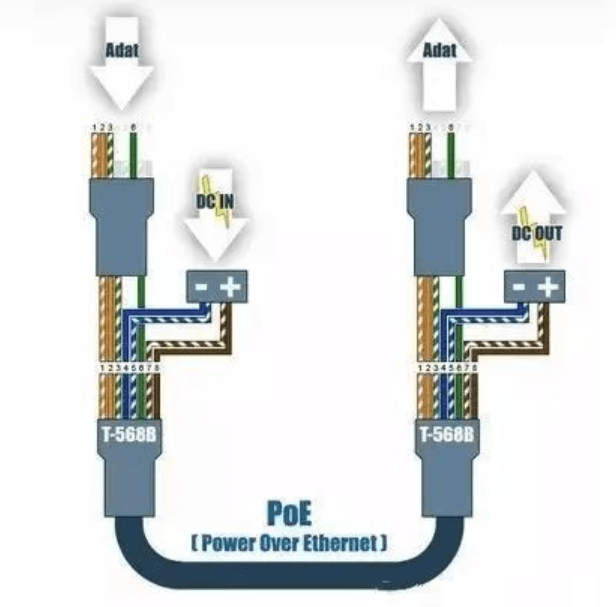
Connecting Outdoor Terminal Devices with PoE Switches
POE (Power Over Ethernet) is the abbreviation of active Ethernet power supply. It refers to the technology that can transmit data signals for IP-based terminals (such as IP phones, wireless LAN access points AP, network cameras, etc.) while providing direct current power for such devices without any modification to the existing Ethernet Cat.5 wiring infrastructure. POE technology can ensure the safety of the existing structured wiring while ensuring the normal operation of the existing network, and minimize costs.
The power supply of a PoE switch is generally understood as the single-port power supply of the PoE switch. There are two popular standards of PoE switches on the market, IEEE 802.3af and IEEE 802.3at. The IEEE 802.3af standard defines the power supply as 15.4W, while the IEEE 802.3at standard defines the power supply up to 30W. Due to the different power supply standards, the single-port power supply also varies.
IEEE 802.3af Standard:
• Power supply voltage: 44~57V
• Power supply current: 10~350mA
• Maximum power supply: 15.4W
• Maximum received power: 12.95W
IEEE 802.3at Standard:
• Power supply voltage: 50~57V
• Power supply current: 10~600mA
• Maximum power supply: 30W
• Maximum received power: 25.5W
The IEEE 802.3at standard is backwards compatible with IEEE 802.3af. This means that if your switch supports the IEEE 802.3at standard and can supply a maximum of 30W of power, it can also power a camera that supports the IEEE 802.3af standard and requires only 7W of power. In actual use, the maximum power consumption of many ordinary network cameras is low, generally not exceeding 15W. If each PoE port reserves power based on the maximum power (such as 30W), some ports may have unused PoE power while others may not receive enough power. In this case, some PoE switches support dynamic power allocation, which can avoid this situation
POE technical advantages:
(1) Simplified wiring, and cost savings. Many powered devices, such as surveillance cameras, need to be installed in places where it is difficult to deploy AC power. POE eliminates the need for expensive power supplies and installation time, saving costs and time.
(2) Easy remote management. Like data transmission, POE can monitor and control the device by using Simple Network Management Protocol (SNMP). This feature can provide functions such as night shutdown and remote restart.
(3) Safe and reliable. POE power supply equipment only supplies power to the required devices. Only when the devices that require power are connected will there be voltage on the Ethernet cable, eliminating the risk of leakage on the line. Users can safely mix existing devices and POE devices on the network, and these devices can coexist with existing Ethernet cables.

PoE Application Areas:
(1) Security Monitoring
Currently, PoE technology is widely used in video surveillance systems, which can use network cables to power cameras and transmit signals. In the security system, the front-end cameras are relatively scattered with many locations, and many of them are not convenient for power supply installation. Therefore, the advantages of PoE technology for power supply through the network cable are highlighted.
(2) Wireless Coverage
PoE is widely used in wireless AP coverage of small and medium-sized enterprises or homes. It is usually installed later on without any pre-set power source, and it also requires the laying of a transmission network to transmit signals. However, using PoE technology can solve both signal transmission problems at the same time, which is aesthetically pleasing and convenient for construction.
(3) Fiber To The Building (FTTB)
For Fiber-to-the-Building (FTTB), the optical modem is usually deployed in the weak current well of the corridor, which is inconvenient for laying power supply. Using PoE can better solve the power supply problem of the optical modem outdoors.
In addition to these areas, PoE devices will also have more application scenarios in security protection, building control, retail, entertainment, and other fields.
